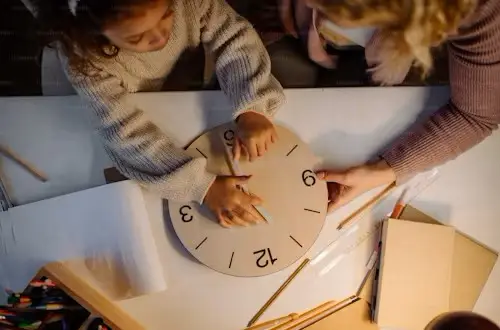How to Effortlessly Replace Bad Habits with Good Ones that Stick

We’ve all been there. You want to replace bad habits in your life, but somehow they keep pulling you back. Whether it’s late-night snacking, mindlessly scrolling through social media, or skipping the gym “just this once,” breaking those patterns can feel impossible. But what if I told you it doesn’t have to be hard? What if you could effortlessly replace bad habits with good ones that stick—without the constant struggle?
Imagine waking up energized, productive, and ready to take on the day, all because you’ve built better habits. It sounds like a dream, but it’s something you can achieve with small, simple shifts in your routine. And the best part? Once you get started, the process becomes almost effortless.
In this guide, we’ll explore how to replace bad habits with good ones that last. We’ll break it down step by step, using real-life examples, practical tips, and a bit of science to show how your brain can work with you (not against you) to make these changes stick.
So, let’s dive in and discover how a few easy changes can lead to big, lasting results. Ready to begin?
Why Bad Habits Are So Hard to Break
Have you ever wondered why bad habits are so difficult to shake off? The answer lies in how your brain works. Habits, whether they’re good or bad, create patterns in your brain called “habit loops.” Every time you do something, your brain rewards you with a little hit of dopamine, making the habit stronger over time.
Take checking your phone first thing in the morning as an example. The cue (waking up) leads to the action (grabbing your phone) and the reward (that burst of dopamine when you see notifications). Before you know it, it’s automatic. The good news? You can replace these bad habits with better ones using the same process—but it requires a bit of focus and consistency.
The Power of Small Changes
Real, lasting change doesn’t come from huge efforts all at once—it happens through small, steady actions. Trying to change too much at once can be overwhelming, and that’s when we tend to fall back into our old habits. So, why not focus on small steps instead of giant leaps? After all, wouldn’t you rather build sustainable habits that last?
Take Sarah, for example. She’s a 9-to-5 professional who was struggling with procrastination. At first, she thought she could fix it by overhauling her entire work routine in one go. But no matter how hard she tried, she kept slipping back into her old habits. Frustrated, Sarah changed her approach. Instead of trying to change everything, she started by dedicating just 5 minutes each day to focused work. That small shift felt manageable. Over time, those 5 minutes grew into 30, then an hour. Eventually, Sarah found herself finishing all the projects without stress. The secret to her success? Tiny, consistent steps.
This is a perfect example of why small changes are so powerful. When you take small, manageable steps, your brain doesn’t resist them as much. It’s easier to stick with a new habit when it doesn’t feel like a massive challenge.
How to Replace Bad Habits: A Simple Blueprint
Now, let’s dive into practical strategies you can implement right away to replace bad habits with good ones.
1. Find What Triggers Your Bad Habits
Bad habits don’t just happen out of nowhere. There’s always something that sets them off—a trigger that leads them into the same behaviour. It could be stress, boredom, or even a specific time of day. The first step to breaking a bad habit is figuring out what causes it.
Ask yourself: When do I usually fall into this habit? What’s happening around me? Once you know the trigger, you can plan ahead and respond differently. For example, if stress makes you binge-watch TV, try going for a short walk or practising deep breathing instead.
2. Find a Replacement Habit
Here’s a question: Why do bad habits seem to pop up so easily, but good ones feel like a chore? The secret lies in finding a habit that feels just as rewarding as the one you’re replacing. Instead of focusing on the negative (“I need to stop doing this”), shift to the positive (“What can I do instead that’s beneficial?”).
For example, if your goal is to stop snacking on junk food, replace that habit with reaching for a piece of fruit. Over time, your brain will begin to crave the healthier alternative because it still provides a sense of reward.
3. Start Small and Be Clear
Big changes can be exciting, but they’re also harder to stick to. Instead of trying to change everything at once, start small. Focus on one habit at a time, and make your goal clear and specific. For example, instead of saying, “I want to exercise more,” try, “I’ll walk for 10 minutes after lunch every day.”
The clearer and smaller your goal, the easier it is to follow through. Plus, research shows that forming a new habit takes time—about 66 days on average, according to a study from the European Journal of Social Psychology. That’s why it’s important to start with small, doable steps. You’re more likely to succeed when the habit doesn’t feel overwhelming from the start.
4. Hold Yourself Accountable
It’s easier to stick to new habits when someone else knows about your goals. Sharing your progress with a friend, a family member, or even on social media can keep you motivated. When you know someone is checking in on you, it gives you that extra push to stay on track.
Think about this: Wouldn’t you be more likely to follow through if you had to report your progress to someone? You don’t have to do it alone. Whether it’s a buddy system or just telling a close friend, having someone to support and encourage you can make all the difference.
5. Celebrate Small Wins
Change takes time, and every small step forward is worth celebrating. When you hit a milestone, no matter how small, take a moment to recognize your progress. Motivation often wanes when progress isn’t acknowledged. So, why not celebrate every milestone, no matter how small?
Did you replace your evening social media scroll with 10 pages of reading? That’s a win! Maybe you skipped that extra cookie today or managed to stick to your new habit for a week—these are all wins that deserve a little celebration. Treat yourself (without guilt), and use those victories to fuel more positive changes.
Why is this important? Because celebrating small victories keeps you motivated. It reminds you that you’re making progress, even if it’s slow. Plus, it feels good, and that positive feeling helps reinforce your new habits.
Why Your “Why” Makes All the Difference
While you are trying to replace bad habits, knowing why you want to make a change is crucial. Your motivation—your “why”—can make or break your efforts. If you’re clear about why you want to change, you’re more likely to stick with it.
Think about it: What’s driving you to replace your bad habit? Is it because you want to feel healthier, be more productive, or simply improve your quality of life? When your reason is personal and emotional, it adds a powerful layer of motivation.
For example, quitting smoking might be about more than just health—it could be about being around for your kids or feeling better in your daily life. When you connect with these deeper reasons, the process of change becomes easier and more meaningful.
Data-Driven Insight: How Habits Impact Your Well-Being
Incorporating good habits into your life doesn’t just feel great—it’s also scientifically proven to boost your mental and physical well-being. According to the American Psychological Association, replacing bad habits with good ones can reduce stress, improve mood, and even increase longevity.
Current Trends: Habit-Tracking and Digital Detoxing
These days, people are turning to some cool trends to help them replace bad habits and build new ones. Two of the hottest trends right now are habit-tracking and digital detoxing.
Habit-tracking apps are super popular because they make it easy to keep an eye on your progress. Apps like HabitBull or Streaks let you track your daily goals and celebrate your wins. Seeing your progress can be really motivating and help you stay on track.
Another big trend is digital detoxing. Many people are realizing that cutting back on screen time can improve their well-being. By setting aside time to unplug from your phone or computer, you create space for healthier habits like reading, exercising, or spending time with loved ones.
Both of these trends are great tools to support your journey to replace bad habits. They help you stay accountable and focused on what really matters.
Conclusion
Replacing bad habits isn’t about making drastic changes overnight. It’s about taking small, manageable steps that add up over time. By starting with tiny changes, finding out what triggers your habits, and celebrating your progress, you’re setting yourself up for success.
Remember, the journey of replacing bad habits with good ones is a marathon, not a sprint. Use tools like habit-tracking apps and consider a digital detox to support your efforts. The key is to stay consistent and keep your “why” close to your heart. As you make these changes, be patient with yourself and enjoy the small victories along the way. Each step forward is a win and brings you closer to a healthier, more fulfilling lifestyle.
Ready to start replacing your bad habits with good ones? Take the first step today! Choose one small habit you want to change, and use the tips we’ve covered to make it happen. Remember, the key is to start small and stay consistent. Let’s make positive changes together!






